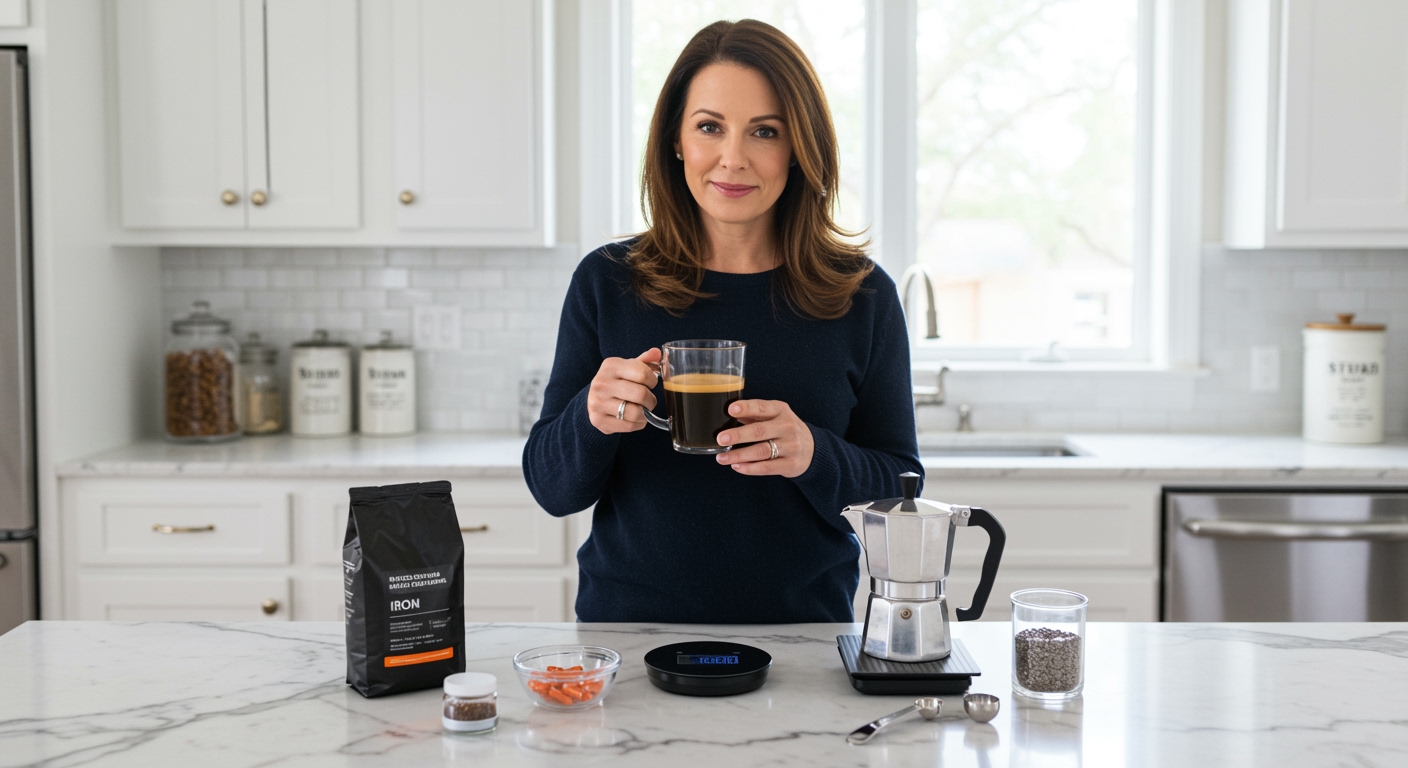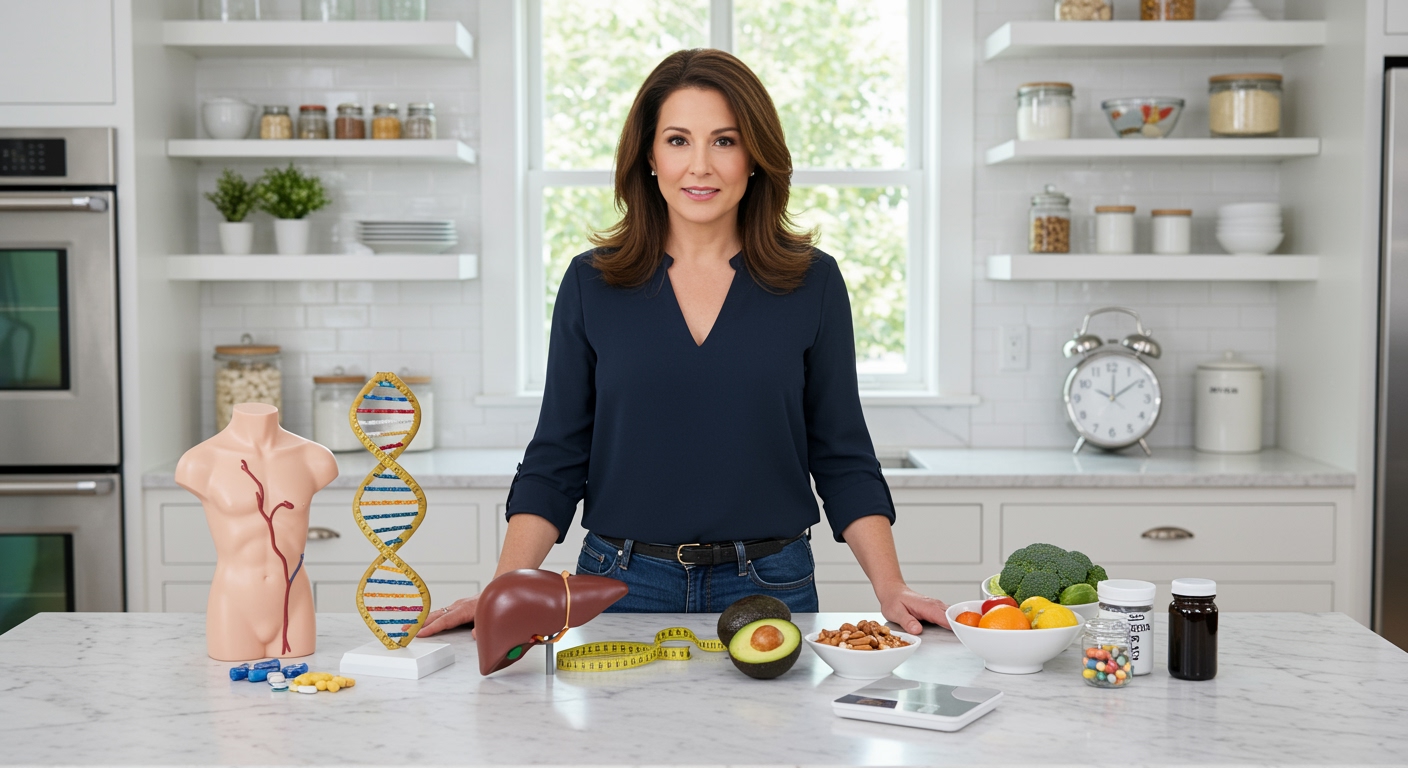✪ Key Highlight: MIT scientists created iron-fortified coffee that tastes identical to regular coffee but fights iron deficiency in 2 billion people.
Introduction
Your morning coffee might soon become a powerful weapon against one of the world’s most widespread health problems.
Scientists at MIT have developed a breakthrough technology that adds iron to coffee without changing its taste, smell, or texture, potentially helping nearly two billion people worldwide who suffer from iron deficiency.
Hi, I’m Abdur, your nutrition coach and today I’m going to analyze this groundbreaking research that could transform how we fight global malnutrition through our daily coffee habit.
What Makes This Iron Technology Different?
Traditional iron fortification has failed because it creates a metallic taste that ruins food and drinks.
MIT researchers solved this problem by creating special iron particles called metal-organic frameworks or MOFs.
These tiny particles combine iron with fumaric acid, a safe food compound that acts like a protective shell around the iron.
The particles are so small they become invisible in your coffee and only release iron when they reach your stomach’s acidic environment.
This means you get all the iron benefits without tasting anything different in your morning cup.
The MOF particles also prevent iron from reacting with coffee’s natural compounds called polyphenols that normally block iron absorption.
Ana Jaklenec from MIT’s Koch Institute explained they wanted a fortification approach that could work globally without reformulating different foods for each country.
✪ Fact: These iron particles remain stable even when exposed to heat, humidity, and long storage times.
How Does Your Body Process This Fortified Coffee?
When you drink iron-fortified coffee, the MOF particles travel through your mouth and throat without releasing any iron.
Once they reach your stomach, the acidic environment breaks down the protective shell and releases the iron for absorption.
Animal studies showed that iron from these particles appeared in the bloodstream within hours after consumption.
The researchers also discovered they could add iodine to the same particles without the nutrients interfering with each other.
This is revolutionary because iron and iodine usually react and lose their effectiveness when combined in traditional supplements.
The iodine successfully reached the thyroid gland where it supports hormone production and metabolic function.
Your body processes these nutrients exactly like it would from natural food sources, making this technology both safe and effective.
✪ Pro Tip: Iron absorption improves when you avoid drinking tea or milk with your iron-fortified coffee.
Which Iron Compounds Work Best In Coffee?
Other researchers tested different iron compounds to find the most effective options for coffee fortification.
They compared ferrous sulfate, ferrous gluconate, ferric sodium EDTA, ferric pyrophosphate, ferrous fumarate, ferrous bis-glycinate, and electrolytic iron.
Ferric sodium EDTA emerged as the winner with the highest solubility and stability in coffee.
This compound delivered almost 4.7 milligrams of iron per 100 milliliters of coffee without affecting taste or aroma.
Chemical analysis confirmed that ferric sodium EDTA did not interact with coffee’s polyphenols, keeping the iron available for absorption.
Gas chromatography testing showed that adding this iron compound had almost no impact on the volatile compounds that create coffee’s signature smell and flavor.
Other iron forms like electrolytic iron and ferrous fumarate caused noticeable off-flavors that would make the coffee undrinkable for most people.
✪ Note: Coffee naturally contains compounds that can reduce iron absorption, but these new technologies overcome this barrier.
What Health Problems Could This Technology Solve?
Iron deficiency affects nearly two billion people worldwide, making it one of the most common nutritional disorders.
This deficiency causes anemia, chronic fatigue, reduced immunity, and impaired brain development in children.
Iron deficiency also increases the risk of infant mortality and complications during pregnancy and childbirth.
Women of childbearing age face the highest risk because they lose iron through menstruation and need extra iron during pregnancy.
Children and teenagers also need more iron to support rapid growth and development during critical life stages.
The MIT technology could also deliver other essential nutrients like zinc, calcium, magnesium, or vitamin A using the same MOF platform.
This approach could help address multiple nutrient deficiencies simultaneously without requiring people to change their eating habits or take multiple supplements.
✪ Fact: Iron deficiency impairs cognitive function and work productivity, creating significant economic losses globally.
When Will Iron-Fortified Coffee Reach Your Cup?
The MIT research team is planning to launch a company to bring iron and iodine-fortified coffee to market.
They received support from the J-WAFS Fellowships for Water and Food Solutions and ongoing backing from the Bill & Melinda Gates Foundation.
The researchers are also developing double-fortified salt that can be used alone or added to staple foods.
This technology could have massive impact in developing countries where malnutrition rates are highest and access to diverse foods is limited.
Coffee is already consumed by millions of people daily, making it an ideal vehicle for nutrient delivery without requiring behavior changes.
The ability to fortify beverages that people already love and drink regularly could help close the nutrition gap on a global scale.
Robert Langer from MIT expressed excitement about this novel application of metal-organic frameworks to advance nutrition, particularly in developing regions.
✪ Pro Tip: Look for iron-fortified coffee products in the next few years as this technology moves from lab to market.
The Bottom Line
Iron-fortified coffee represents a breakthrough solution to global malnutrition that could help billions of people get essential nutrients without changing their daily routines.
The future of nutrition lies in making healthy choices effortless rather than forcing people to completely change their lifestyles.
What are your thoughts on this technology and would you try iron-fortified coffee if it became available in your area?
References
At NutritionCrown, we use quality and credible sources to ensure our content is accurate and trustworthy. Below are the sources referenced in creating this article:
- Qahwa World: Iron Fortified Coffee Global Malnutrition
- PubMed: Iron Fortification Research Study
- MIT News: New Iron Iodine Microparticles for Fortifying Foods
- New Food Magazine: MIT Scientists Create New Fortification Method
- Bioengineer: Coffee Fortified With Iron





